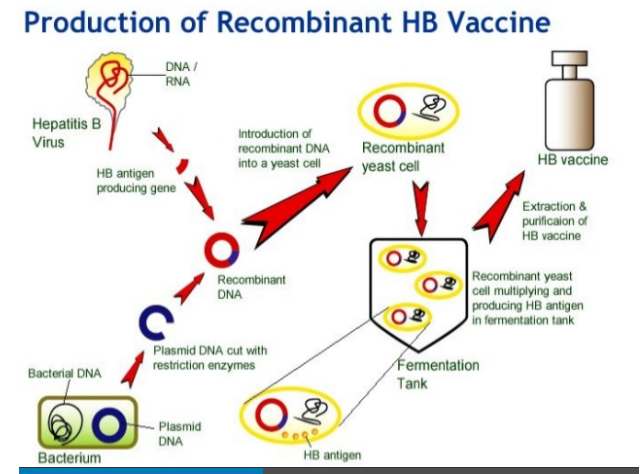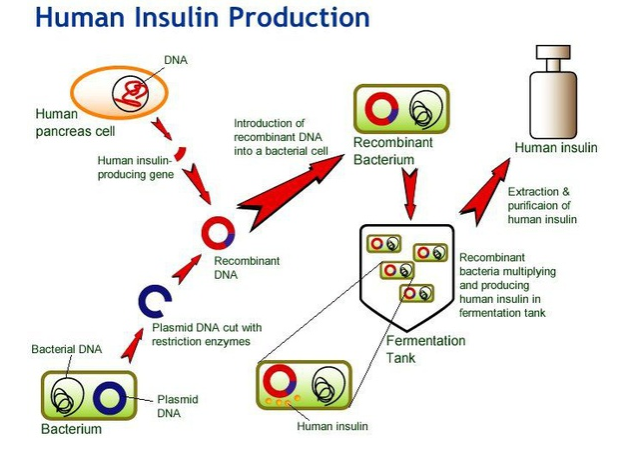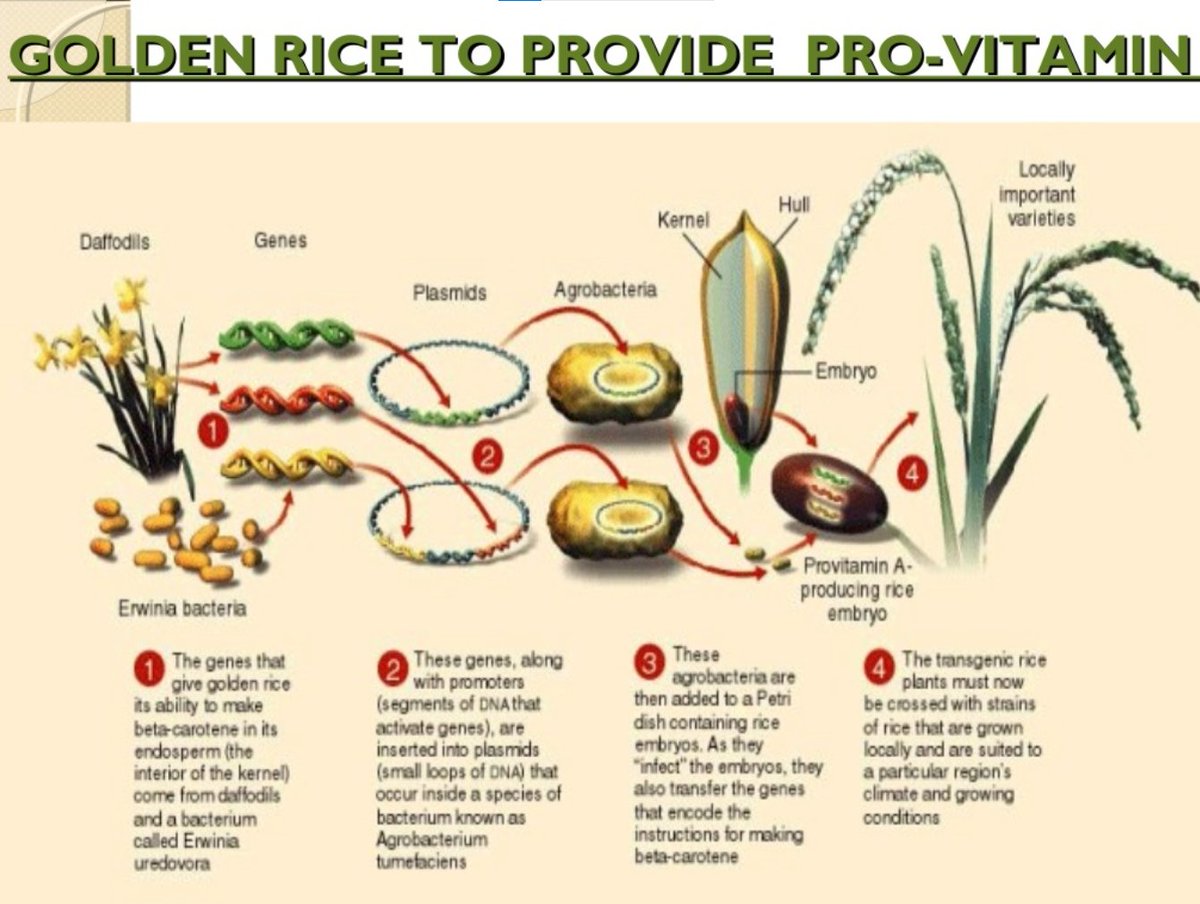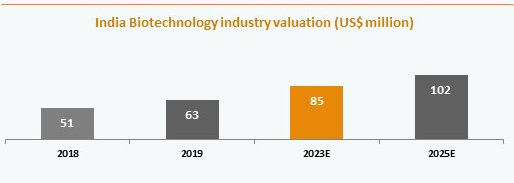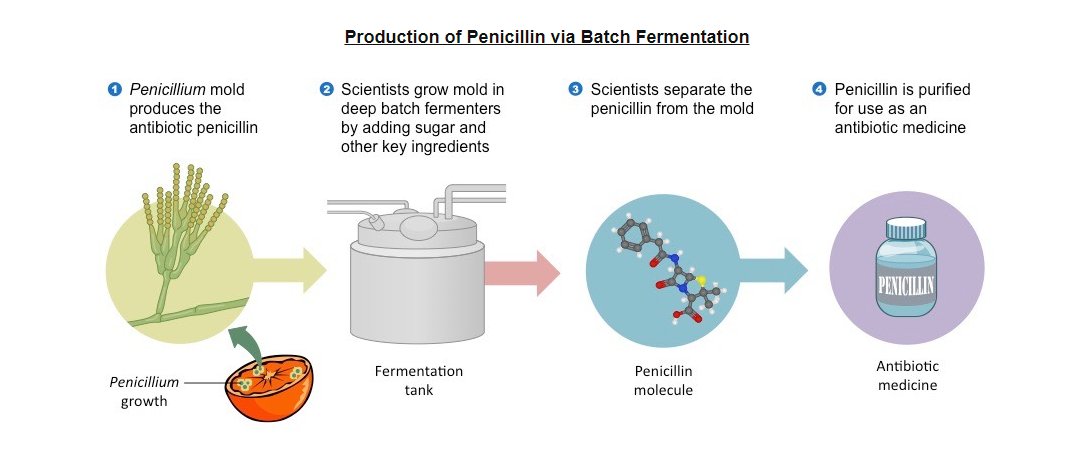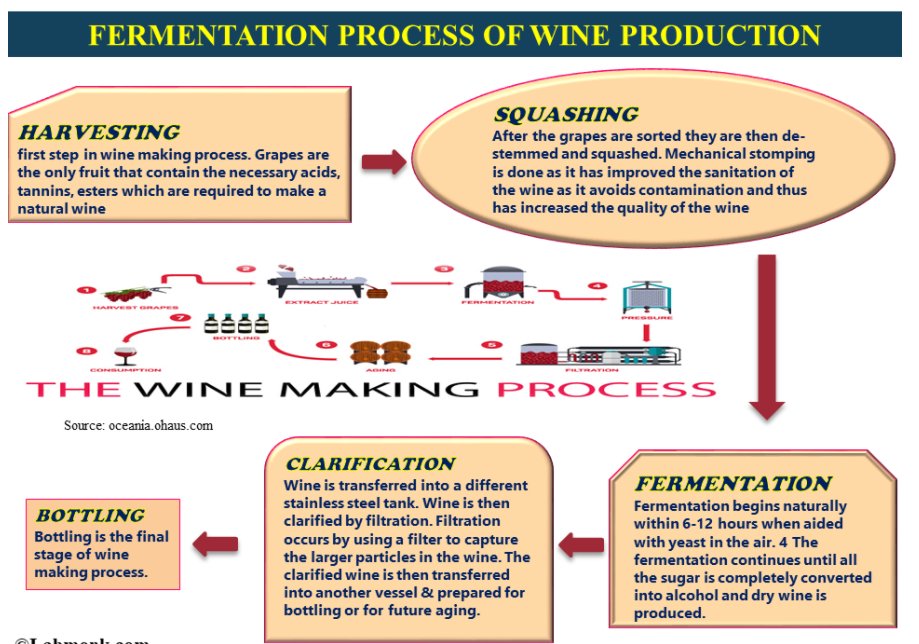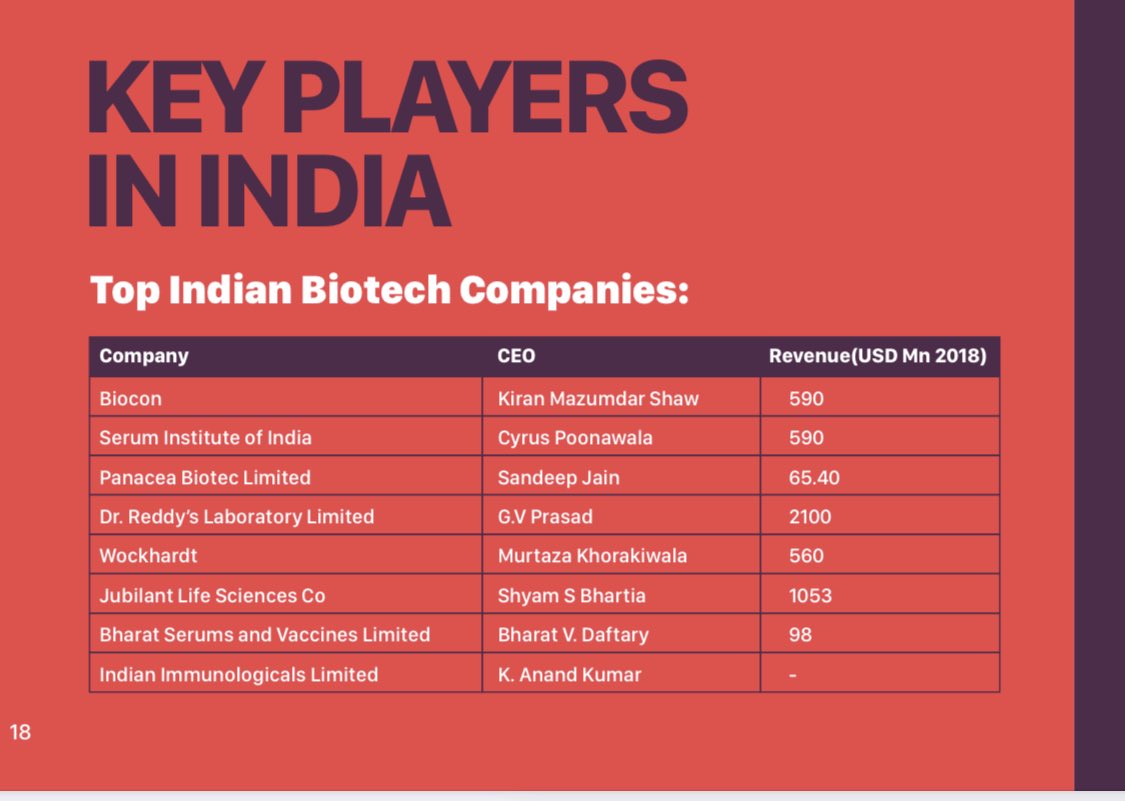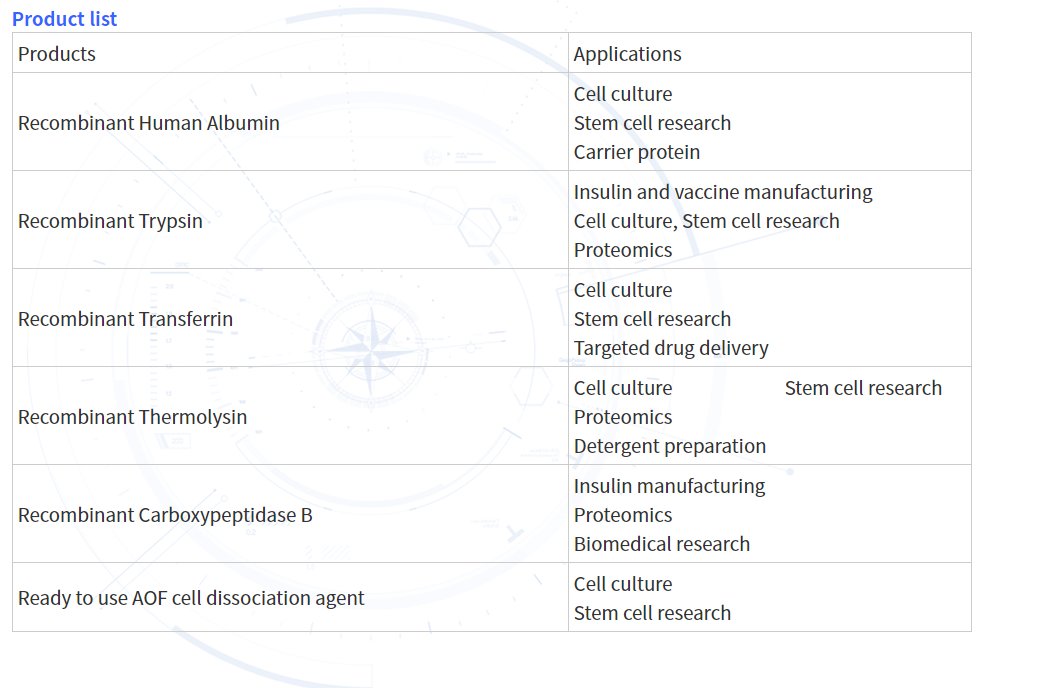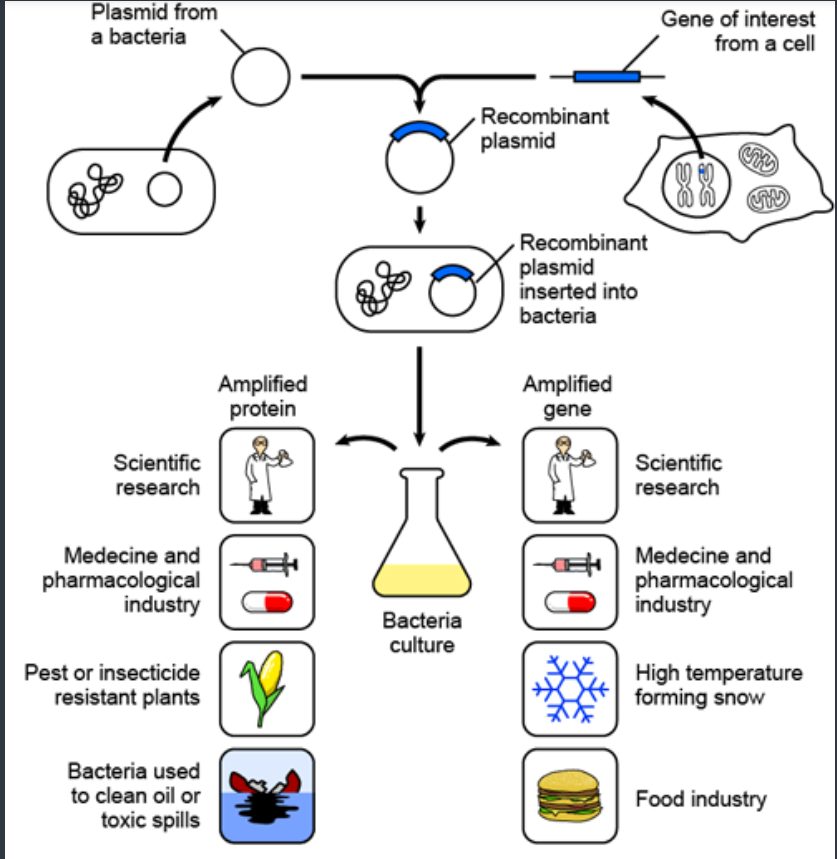What is Biotechnology( i am trying to keep it very simple)
•Biotechnology is the study and manipulation of living things or their component molecules, cells, tissues, or organs for the benefit of humans (or other animals).
Example -
•Biotechnology is the study and manipulation of living things or their component molecules, cells, tissues, or organs for the benefit of humans (or other animals).
Example -
1Recombinant DNA (rDNA) technology
2Polymerase Chain Reaction (PCR)
3Cloning
4Fermentation
5The creation of
(a)Insulin to treat diabetes
(b)Proteases (enzymes used to remove stains from clothing)
(C)Antibodies (for recognizing and fighting certain diseases
2Polymerase Chain Reaction (PCR)
3Cloning
4Fermentation
5The creation of
(a)Insulin to treat diabetes
(b)Proteases (enzymes used to remove stains from clothing)
(C)Antibodies (for recognizing and fighting certain diseases
(D)Selective Breeding (dog breeds, flowers, fruits)
(E)Pharmaceutical drugs
•Cellular manipulation products (growing human ears on mice
just see how Biotechnology produces Hepatitis B vaccine
(E)Pharmaceutical drugs
•Cellular manipulation products (growing human ears on mice
just see how Biotechnology produces Hepatitis B vaccine
The biotechnology sector encompasses five segments that cater to different sectors;
1-biopharma -
2 bio-agriculture
3 - bio-service
4- bio-industry and
5- bioinformatics (or BioIT).
1-biopharma -
2 bio-agriculture
3 - bio-service
4- bio-industry and
5- bioinformatics (or BioIT).
1-Biopharama-Bio-pharma industries are into the production of a multitude of
Therapeutic drugs,
Gene therapy vectors
Monoclonal antibodies
vaccines
fermentation drug like penicillin is example of Biotechnology because here we are using bacterial fermentation to produce it
Therapeutic drugs,
Gene therapy vectors
Monoclonal antibodies
vaccines
fermentation drug like penicillin is example of Biotechnology because here we are using bacterial fermentation to produce it
Similarly Biologic and vaccines, insulin where we are using living organism to for production is a example of Biotechnology
2- Bio agriculture -
2- Bio agriculture -
The world& #39;s population is increasing rapidly therefore if we don& #39;t increase our agricultural produce there will be a time that hunger will overtake the world . The only way we can do this is by the adoption of the method s of agricultural biotechnology.
Agricultural biotechnology, also known as agritech, is an area of agricultural science involving the use of scientific tools and techniques, including genetic engineering, molecular markers, molecular diagnostics, vaccines, and tissue culture,
to modify living organisms: plants, animals, and microorganisms. Crop biotechnology is one aspect of agricultural biotechnology
Aim is to
http://1.Giving"> http://1.Giving the plant pest resistance
2.Producing foods with a higher protein or vitamin content
Aim is to
http://1.Giving"> http://1.Giving the plant pest resistance
2.Producing foods with a higher protein or vitamin content
3.Developing drugs that can be grown and isolated in plant products
4.Using animals as a source of medically valuable proteins
4.Designs and testing of drugs and genetic therapies
4.Using animals as a source of medically valuable proteins
4.Designs and testing of drugs and genetic therapies
3-Bio-Services
After Biopharmaceuticals, Bio-services are the second largest sector of the Indian biotech sector, with about 33% market share. The bio services industry includes CRO’s, both Clinical Research Organizations (that carry out clinical trials of potential therapeutic
After Biopharmaceuticals, Bio-services are the second largest sector of the Indian biotech sector, with about 33% market share. The bio services industry includes CRO’s, both Clinical Research Organizations (that carry out clinical trials of potential therapeutic
drugs before they are launched in the market) and Contract Research Organizations (that manufacture bulk chemicals or API’s on a contract basis for larger international firms).
4-Bio-Industrial
The bio-industrial sector mainly comprises of enzymes that have multiple industrial uses and the generation of bio-energy through sources such as biomass and biofuels.
The bio-industrial sector mainly comprises of enzymes that have multiple industrial uses and the generation of bio-energy through sources such as biomass and biofuels.
5-Bioinformatics
It contributes to the smallest part of the biotech industry in India. This sector deals with the creation maintenance of extensive electronic databases on various biological systems , the tools and software to analyze the information derived from these databases
It contributes to the smallest part of the biotech industry in India. This sector deals with the creation maintenance of extensive electronic databases on various biological systems , the tools and software to analyze the information derived from these databases
The Indian Biotechnology industry that was valued at $70 bn in 2020 will reach $150 bn target by 2025.
•Early ancestors took advantage of microorganisms and used fermentation to make breads, cheeses, yogurts, and alcoholic beverages such as beer and wine these are all Biotechnology only
Another simple article on Biotechnology https://www.iberdrola.com/innovation/what-is-biotechnology">https://www.iberdrola.com/innovatio...
https://www.nature.com/articles/d41586-018-07671-9">https://www.nature.com/articles/...
Read how insulin is manufactured using biotechnology https://www.nlm.nih.gov/exhibition/fromdnatobeer/exhibition-interactive/recombinant-DNA/recombinant-dna-technology-alternative.html">https://www.nlm.nih.gov/exhibitio...
Read this excellent document by Government of India on Biotechnology https://static.investindia.gov.in/s3fs-public/2020-04/Biotechnology%20brochure_V5_Non-Paginate.pdf">https://static.investindia.gov.in/s3fs-publ...
TYPES OF BIOTECHNOLOGY
Like the stripes of the rainbow, the different biotechnology applications are grouped into seven colours or research and development areas.
Like the stripes of the rainbow, the different biotechnology applications are grouped into seven colours or research and development areas.
Red biotechnology. This is the health branch and responsible, according to the Biotechnology Innovation Organization (BIO), for the development of more than 250 vaccines and medications such as antibiotics, regenerative therapies and the production of artificial organs.
Green biotechnology. It is used by more than 13 million farmers worldwide to fight pests and nourish crops and strengthen them against microorganisms and extreme weather events, such as droughts and frosts.
White biotechnology. The industrial branch works to improve manufacturing processes, the development of biofuels and other technologies to make industry more efficient and sustainable.
Yellow biotechnology. This branch is focused on food production and, for example, it carries out research to reduce the levels of saturated fats in cooking oils.
Blue biotechnology. This exploits marine resources to obtain aquaculture, cosmetics and health care products. In addition, it is the branch most widely used to obtain biofuels from certain microalgae.
Grey biotechnology. Its purpose is the conservation and restoration of contaminated natural ecosystems through, as mentioned above, bioremediation processes.
Gold biotechnology. Also known as bioinformatics it is responsible for obtaining, storing, analysing and separating biological information, especially that related to DNA and amino acid sequences.
Richcore Lifescience ( Acquired by Laurus ) they are having all their Biotech products AOF ( animal origin free) so less chances of contamination and allergic reaction
Recombinant Human Serum Albumin (Rec. HSA) - which is one of the product of Richcore ( Laurus )is animal origin free expressed in E.coli without animal or human derived raw materials. It is also free from other contaminating serum proteins.
Recombinant human serum albumin (rHSA) is genetically engineered and derived from a rice-based expression system. It is a highly purified and completely animal-, virus-, and bacteria-free product that was developed as an alternative to plasma-derived HSA
The global Recombinant Human Serum Albumin market size is projected to reach USD 107.6 million by 2026, from USD 67 million in 2020, at a CAGR of 8.2% during 2021-2026.( Another big player in Albumin market is Reliance life which is Having human source albumin not Recombinant one
https://indiancompanies.in/biotechnology-companies-india/">https://indiancompanies.in/biotechno...
Pichia pastoris (P. pastoris) is a yeast and Recombinant albumin of Laurus Richcore is developed on Pichia pastoris cell line ( Animal origin free) other source of albumin are 1 Human Serum 3- Bovine serum
albumin is sourced from human plasma or Bovine plasma that contains viruses, bacteria, and other infectious agents. Most of the donated plasma is treated to eliminate infectious agents.
However, in many cases, it still leads to infection and disease transmission, which may hamper industry growth.Recombinant albumin is manufactured by using transgenic rice seeds on yeast culture media ( Animal origin free) i used some simplistic words to clarify the process.
Biotechnology-Richcore-Laurus - Animal origin free https://twitter.com/nid_rockz/status/1381925678107348998">https://twitter.com/nid_rockz...
See this video to understand Biotechnology https://www.youtube.com/watch?v=RrTCjp2015M">https://www.youtube.com/watch...
https://www.youtube.com/watch?v=m29Y3qhCNyk(">https://www.youtube.com/watch... Another video on Biotechnology)

 Read on Twitter
Read on Twitter